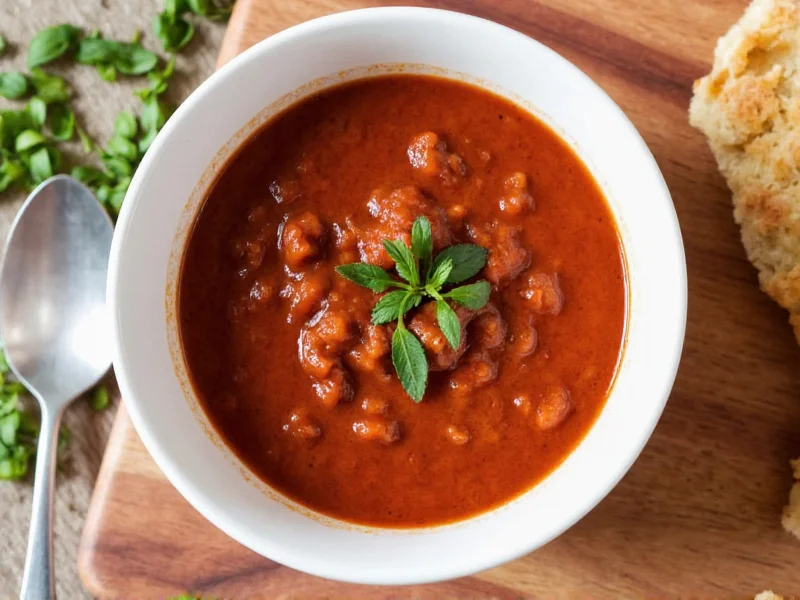Ancho chiles represent one of Mexico's most versatile culinary treasures, transforming ordinary dishes into extraordinary culinary experiences. These dried poblano peppers offer a complex flavor profile that combines subtle fruitiness with earthy depth and mild heat—making them accessible even to those who typically avoid spicy foods. Understanding how to properly select, prepare, and incorporate ancho chiles into your cooking unlocks a world of authentic Mexican flavors that elevate everything from weekday dinners to special occasion meals.
Understanding Ancho Chiles: More Than Just Dried Peppers
Contrary to common misconception, ancho chiles aren't a separate pepper variety but rather poblano peppers that have been allowed to fully ripen to red before drying. This maturation process develops their distinctive deep burgundy color and complex flavor profile. When shopping for authentic ancho chile recipes, look for peppers that are pliable with a leathery texture—not brittle or crumbly. Properly stored in an airtight container away from light, they maintain optimal flavor for 6-12 months.
| Characteristic | Details |
|---|---|
| Heat Level | 1,500-2,500 Scoville units (mild to medium) |
| Flavor Profile | Earthy, raisin-like, subtle sweetness, smoky notes |
| Common Substitutes | Guajillo (less sweet), Mulato (darker, spicier) |
| Traditional Pairings | Chocolate, garlic, cumin, oregano, tomatoes |
Essential Preparation Techniques for Authentic Ancho Recipes
Mastering these preparation methods transforms good ancho chile recipes into exceptional ones. Never skip the toasting step—this crucial technique awakens the peppers' aromatic compounds. Place whole dried anchos on a dry skillet over medium heat for 20-30 seconds per side until they release a nutty fragrance. Be careful not to burn them, as this creates bitterness. For rehydration, cover toasted peppers with boiling water and let steep for 15-20 minutes until pliable. Reserve the soaking liquid—it contains valuable flavor compounds that enhance homemade ancho sauce recipes.
Signature Ancho Chile Recipes Worth Mastering
Traditional Ancho Mole Sauce
This foundational recipe serves as the base for countless authentic ancho recipes. Combine 6 rehydrated ancho chiles, 2 oz Mexican chocolate, 1/4 cup toasted sesame seeds, 2 cloves garlic, and 1 cup reserved soaking liquid in a blender. Process until completely smooth, then simmer for 20 minutes to develop flavors. This versatile sauce works beautifully with chicken, turkey, or as a vegetarian ancho recipe base for roasted vegetables. The chocolate isn't for sweetness—it balances the chiles' earthiness with subtle complexity.
Ancho-Orange Braised Short Ribs
For a stunning main course that showcases easy ancho pepper recipes, try this elegant preparation. Sear 3 lbs beef short ribs, then sauté 1 chopped onion and 3 minced garlic cloves. Add 4 rehydrated and seeded ancho chiles, 1 cup fresh orange juice, 1 tbsp cumin, and 2 cups beef broth. Braise covered at 325°F for 2.5-3 hours until fork-tender. The citrus brightens the ancho's earthiness while the slow cooking tenderizes the meat and melds flavors perfectly.
Vegetarian Ancho Black Bean Soup
This hearty vegetarian ancho recipe demonstrates the pepper's versatility beyond meat dishes. Sauté 1 diced onion and 2 diced carrots until softened. Add 4 cups vegetable broth, 2 cups cooked black beans, 3 rehydrated ancho chiles (seeded), 1 tsp smoked paprika, and 1 cup corn. Simmer 20 minutes, then blend half the soup for creaminess. The anchos provide depth without overwhelming heat, making this family-friendly while still sophisticated.
Advanced Applications: Beyond Traditional Ancho Recipes
Creative cooks discover surprising applications for ancho chiles that extend beyond conventional Mexican cuisine. Incorporate finely ground ancho powder into chocolate desserts for subtle warmth that complements rather than competes with sweetness. Use rehydrated anchos in fruit salsas with mango or pineapple for a sophisticated sweet-heat balance. For cocktail enthusiasts, an ancho-infused simple syrup transforms ordinary margaritas into complex signature drinks. These innovative approaches demonstrate why professional chefs consider ancho chiles indispensable pantry staples.
Troubleshooting Common Ancho Recipe Challenges
Even experienced cooks encounter issues with ancho chile recipes. If your sauce tastes bitter, you likely over-toasted the peppers or included too many seeds—start with just 1-2 seeds per pepper for heat control. For thin sauces, simmer uncovered to reduce or add a tablespoon of ground almonds for natural thickening. When anchos seem flavorless, they've probably passed their prime—fresh anchos should have a pronounced aroma when toasted. Remember that ancho heat intensifies slightly when cooked, so adjust other spices accordingly in your ancho chile adobo recipes.
What's the difference between ancho and mulato chiles?
Ancho chiles are fully ripened red poblanos dried to burgundy color with sweet, raisin-like notes. Mulatos are poblanos left to ripen even longer before drying, resulting in darker color, spicier profile (2,500-3,000 Scoville), and stronger chocolate notes. While often substituted, they create distinctly different flavor profiles in traditional Mexican ancho recipes.
Can I use ancho powder instead of whole dried chiles?
Yes, but with adjustments. Substitute 1 tablespoon ancho powder for 2 whole dried chiles. Since powder lacks the rehydration liquid's complexity, add 2 tablespoons extra broth or water to maintain proper consistency in your homemade ancho sauce recipes. Note that freshly ground powder from whole chiles yields superior flavor to pre-ground supermarket varieties.
How can I reduce the heat in ancho recipes without losing flavor?
Remove all seeds and inner membranes before rehydrating, as these contain most capsaicin. For authentic ancho recipes, add natural sweeteners like roasted sweet potatoes or a small amount of honey to balance heat. Dairy components like Mexican crema also temper spiciness while enhancing the chiles' earthy notes in ancho chile marinade recipes.
What's the best way to store prepared ancho sauces?
Cool completely before transferring to airtight containers. Properly prepared ancho sauces keep for 1 week refrigerated or up to 6 months frozen in ice cube trays (transfer cubes to freezer bags once solid). Always leave 1/2 inch headspace in containers to accommodate expansion during freezing. Thaw overnight in the refrigerator before reheating gently over low heat.











 浙公网安备
33010002000092号
浙公网安备
33010002000092号 浙B2-20120091-4
浙B2-20120091-4